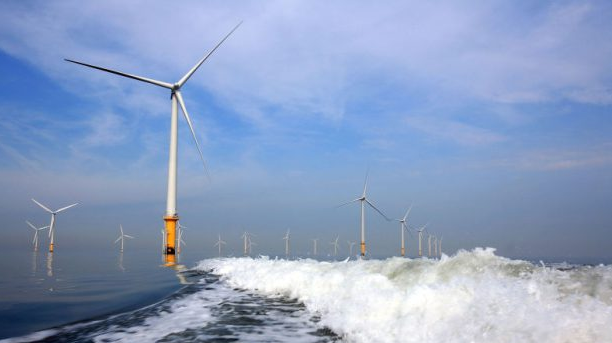
Hydrogen is the simplest and most abundant element in the universe, but it rarely exists as a gas by itself – it must be separated from other elements. Hydrogen can be produced by the electrolysis of water; using an electric current to break water into its component elements. When hydrogen is produced through renewable energy generation, such as wind turbines or solar panels, it creates what is known as green hydrogen.
A mix of technologies are essential for meeting our carbon emissions targets. Green hydrogen will play a major role in providing an alternative to fossil fuels, as its production does not generate any harmful emissions. In fact, the UK Government has already invested heavily in green hydrogen projects.
HP2, a wind farm 89 kilometres off the coast of Yorkshire, is planned to be fully operational by 2022. Boasting a capacity of 1.4 gigawatts (GW), the wind farm will provide power to over 1.3 million homes. While these new farms sound idyllic, they do bring complications. Managing the electricity generated to match the demand is becoming more complicated as more generation sources are added. Local storage can help with this, whether it be large batteries or green hydrogen. They also help increase the capacity factor storing the energy when the demand is not there. How is it best to integrate the renewable power generated into the UK grid system?
Green integration
Ensuring the relationship between the grid and renewable generation relies on gathering data. Integrating more volatile forms of renewable energy, like green hydrogen, only heightens the complexity of this infrastructure, creating new challenges of balancing supply and demand and energy storage.
As the UK invests in renewable generation sites, grid operators must invest in software to manage their integration. COPA-DATA’s zenon can be used to integrate green hydrogen into both the electricity and gas supply. As smart grid software, the system continually monitors operations from the energy grid and wide-spread generation assets, identifying where energy is being generated and where it is required.
The energy storage process can be automated, meaning that hydrogen stored can either be used for the network when needed or converted back to electricity if demand shifts.
This stream of demand and supply information is just one small fraction of the sheer amount of data that the software can gather from the grid and generation. With the zenon Energy Edition, it is possible to create an intelligent network, combining renewable generation data with grid demand and individual substations, sharing accurate forecasts of gas and electricity demand.
Investment in renewable energy is essential if we are going to be a carbon-neutral country by 2050. Creating and improving the physical infrastructure is the first step, but implementing technology to integrate these renewable sources and make them as efficient as possible is also vital.

